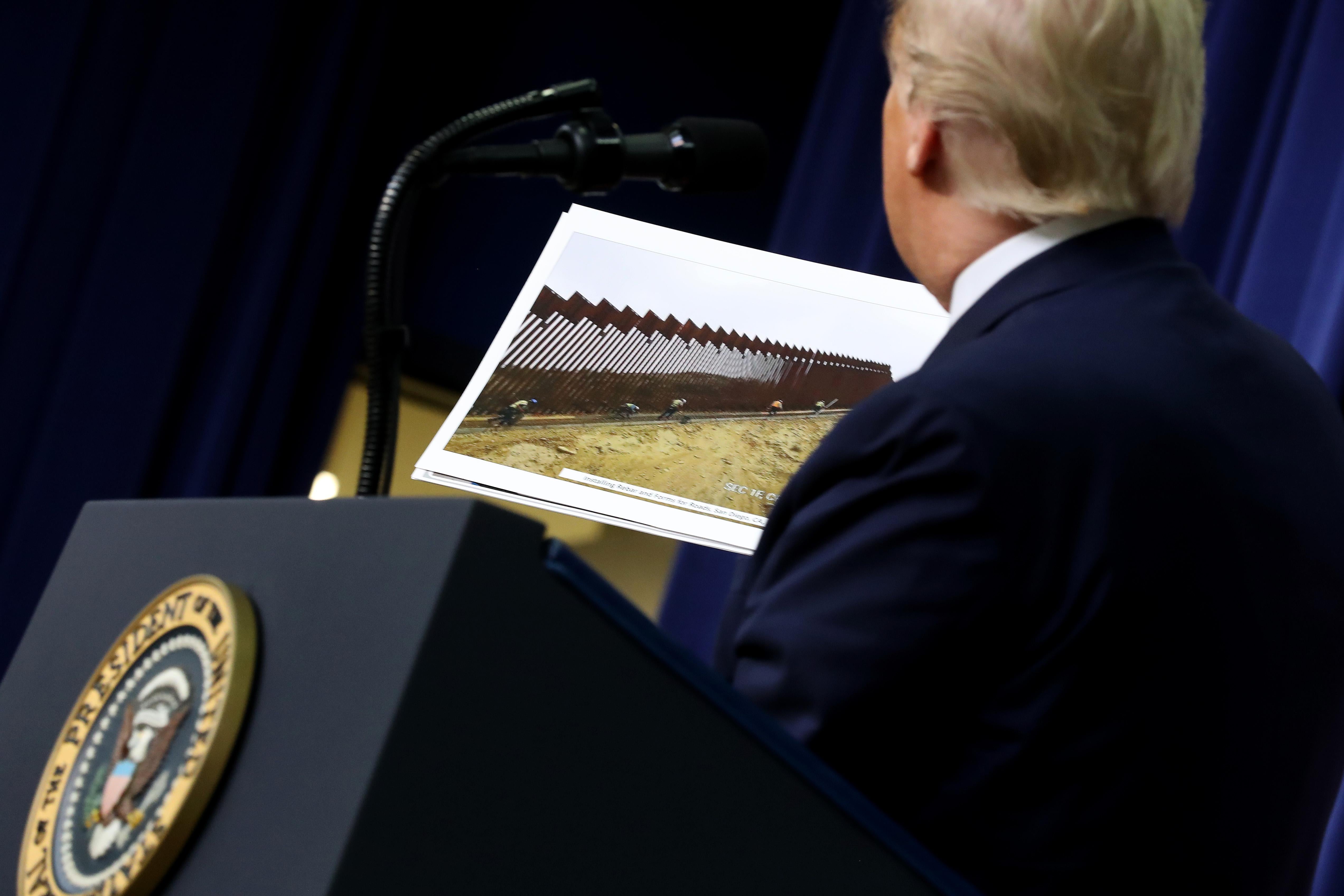On Tuesday, the Trump administration announced that it will speed up construction of the border wall before the 2020 election by ignoring a law it doesn’t like. That’s nothing new: Throughout his presidency, Donald Trump has decried the “lawless state of our southern border”—but his administration has repeatedly suspended the law to build a wall between the U.S. and Mexico. In less than three years, Trump’s Department of Homeland Security has relied on a single federal law, the Real ID Act of 2005, to push aside nearly 50 statutes to put up portions of a border wall. This time around, DHS will disregard a rule that forces contractors to compete for funds (even though Trump campaigned on cutting waste by awarding contracts to the lowest bidder).
Most Americans probably know the Real ID Act as the law that coerced states into adopting stricter standards for driver’s licenses that take effect later this year. But Congress, which passed the statute with large bipartisan majorities, larded it up with massive grants of power to the Department of Homeland Security. Most notably, the act declared that the Secretary of Homeland Security “shall have the authority to waive all legal requirements” that she “determines necessary to ensure expeditious construction” of a border wall. In other words, any DHS secretary seeking to build a wall can cast aside all laws, state and federal, that might stand in her way.
Michael Chertoff, secretary of homeland security under George W. Bush, cited this provision on four occasions to build border fencing. Barack Obama’s DHS secretaries never used it. Trump’s DHS secretaries, by contrast, have cited the Real ID Act over and over again to override dozens of laws protecting the environment, Native American land, historic preservations, national monuments, and archaeological sites. The Sierra Club, which has challenged the wall in court, keeps a running tab of the roughly 50 laws that Trump’s DHS has overridden. So does Kenneth D. Madsen, a professor at Ohio State University, who has laid out each waiver in a dizzying chart.
The consequences of Trump’s rushed construction have already been devastating. A Wall Street Journal investigation found that the wall imperils a mind-boggling array of species. More than 60 percent of species jeopardized by the border wall are already endangered, while 24 percent are threatened. Eighteen types of birds alone, including the bald eagle, will be affected by the wall, as will countless species critical to the region’s biodiversity. The wall has already cut through Organ Pipe Cactus National Monument, as well as Quitobaquito Springs, home to an endangered pupfish that lives nowhere else in the world. Trump’s wall replaces previous fencing that was wide enough for animals to pass through. Scientists have found that the wall will wreck migration patterns, bisecting the geographic range of 1,506 native animals and plants, including 62 critically endangered species.
The lives of local communities and tribes will be upended by the wall. The new barrier will cause deadly flooding by trapping debris and turning into a dam that pushes the Rio Grande into border towns. As climate change exacerbates flooding in the region, border towns will suffer immense property damage. Contractors building Trump’s wall have also blasted through sacred Native American sites, including ancient burial grounds where construction crews have found bone fragments.
Since Secretary Kirstjen Nielsen resigned in April 2019, this authority has been exercised by acting secretaries, who did not obtain Senate confirmation to lead the agency. Chad Wolf, the current acting secretary, is thus allowed to set aside any law enacted by the people’s representatives despite never being confirmed to his position by the people’s representatives.
The Supreme Court has never ruled on the merits of this vast delegation of power to an unelected bureaucrat. And Congress’ decision to give a federal agency so much lawmaking authority is the kind of thing that sometimes incenses the conservative justices. But when conservation groups challenged the administration’s authority to waive environmental laws, the lower courts threw out their case, and SCOTUS declined to hear it. The court’s far-right bloc appears eager to let Trump forge ahead with his wall, legal roadblocks be damned. After Congress refused to fund construction, Trump declared a national emergency in 2019, then diverted billions of dollars in military funding to finance the wall. The courts initially halted construction, because federal law bars Trump from transferring money to fund an “item” that Congress already “denied”—and Congress denied funding for the border wall.
In July 2019, however, the Supreme Court issued a 5–4 order allowing Trump to raid military funding and begin building the wall. The majority provided just one sentence of reasoning, declaring that the government had “made a sufficient showing” that the plaintiffs—advocacy groups led by the Sierra Club—had “no cause of action.” This threadbare justification does not even hint that the government acted lawfully. Rather, it suggests that the court’s conservatives do not believe federal law permits anyone to challenge the administration’s misuse of federal funds to build the wall.
The ruling didn’t address the Real ID Act, but once Trump got the green light to pour money into construction, his DHS amped up construction. The border wall is a testament to the president’s ability to sidestep Congress with the help of a pliant Supreme Court. If the southern border is, in fact, lawless, that is because Trump has eliminated the law there.
